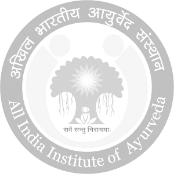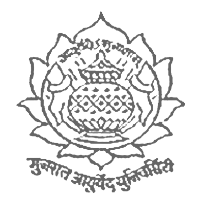Kerstin Rosenberg interviews the Ayurveda doctor Prof. Dr. Gangadharan, Medical Director of the I-AIM (=Institute of Ayurveda and Integrative Medicine)
Obesity is a big issue in today's world. Not only for optical reasons, but also for health reasons many people want to lose weight. Is overweight also dangerous for health from an Ayurvedic point of view? What diseases can result from it?
According to Ayurveda, obesity (sthaulya) is a very undesirable condition as compared to slimness (karshyam). Sthaulya is described as one of the eight conditions that are difficult to cure (maharogas). Obesity is the starting point for Kapha diseases. Diabetes Mellitus, coronary heart disease (CHD), skin diseases and liver problems can be consequences of obesity. Ayurveda basically advises to keep the body fit and not to leave it to the risks of obesity.
Please define obesity from an Ayurvedic point of view. What is disturbed on the physical, functional and possibly mental level?
From an Ayurvedic perspective, obesity results in a disturbance of kapha and medhas, caused by a disturbed digestive fire and the creation of ama (incompletely metabolized primary nutrients) in the body. Ama causes microchannels in the body to be partially or completely blocked. As a result, medhas is increased (fat tissue). The increased fat in the body results in excessive sweat with unpleasant odor. The excess weight restricts the physical movements, so as a result, physical activities are also restricted. In men, libido decreases. Mentally, it had a stressful effect due to the social stigma associated with obesity. Overall, obesity has a negative effect both psycho-somatically and socially.
Can anyone become overweight? Or are only certain constitutions affected by it?
Theoretically, Kapha-Prakritis, Kapha-Pitta-Prakritis or Kapha-Vata-Prakritis can become overweight. It is very difficult for Vata constitutions, Vata-Pitta constitutions and Vata-Kapha constitutions to become overweight even if they try. This is due to the genetic conditions of such persons, which in turn are determined at the time of fertilization and the formation of the zygote in the womb. Therefore, persons in whom Kapha is constitutionally present should be extra careful in their diet and lifestyle to prevent obesity.
What should be taken care of in the Ayurvedic treatment of obesity patients? Which therapies (massages, diet, massage, herbs ...) work particularly well?
In obesity patients, a balanced diet that gives energy without increasing fat tissue is of paramount importance. Diet and medicine should be chosen to stimulate the digestive fire at tissue level and help open the microchannels through which nutrients are absorbed, so that food from the intestine can be well absorbed to the last cell of the body. Various reducing therapies are helpful for obesity.
One way is body dousing (Dhanyamla Dhara) with medicated liquids. These should have the property of reducing, as well as separating and releasing kapha and ama from the body. They should also be tiksna, i.e. pungent, penetrating, to open the channels in the body. The body pour is very effective in the first phase of a treatment. It can be used in combination with powder massage for 7 days. Powder massage (Udvartanam) should be done in reverse direction (from feet to head) with strong pressure. This is very effective to reduce body mass.
Dhanyamla Dhara and Udvartana are followed by a body massage with rock salt oil (as per Bhaishajyaratnavali). More pressure and more time should be spent on the abdomen and buttocks. To make these treatments even more effective, 14 days of cleansing enemas with kapha-reducing herbs and laxatives should be administered. This 21-day panchakarma treatment is very helpful. The diet should characteristically be kapha and medhas reducing. The following foods seem to be useful and are also available in Europe:
- Vegetables: bitter, somewhat pungent and astringent, such as leaves of the horseradish tree (Moringa oleifera = drumstick leaves), ladyfinger, (snake) cucumber, white pumpkin.
- Cereals and pulses: Barley, horse bean (Macrotyloma uniflorum), red rice (unpolished, stored for more than one year), whole wheat, unpolished finger millet (Ragi).
- Fruits: pomegranate, dates and all dry fruits, sugarcane juice, soft coconut water, skimmed buttermilk boiled with turmeric, cumin seeds and curry leaves.
- Boiled drinking water with a little cumin and coriander seeds.
- Mango is not recommended.
- Foods containing yeast should not be consumed regularly.
- Avoid light flour and frozen foods.
- Non-vegetarians should avoid red meat as well as meat from very meaty animals.
- Small, non-oily fish and poultry are fine.
- Do not drink cold water, consume ice cream or chocolate.
What can patients do to avoid gaining weight again after a successful cure?
People should be physically active. Swimming, walking and cycling are excellent exercises as they work all the muscles of the body. Proper yoga exercises in combination with Bhastrika Pranayama (a special breathing exercise) is advisable. Inner peace / calmness of mind is of special importance. One should not sleep during the day. Many people are not aware that daytime sleep promotes sluggishness and can result in obesity. Only people beyond the age of 60 should enjoy a nap. Everyone else only during extreme summers. If you need sleep very badly during the day, the best alternative is to sleep in an inclined position (slightly upright). This small change brings good things for the health of the body.
Do you have any other personal recommendation or experience to share with affected patients?
There is a story of a doctor who read the riot act to an overweight patient: He was going to die within the next 40 days anyway, so he didn't need any treatment. The patient returned on day 41, at half his weight. He had lost weight because of the fear of imminent death. The doctor told him that his words actually represented the therapy with the intention of opening the body channels.
By applying the principles of points 1 - 5, I was able to achieve up to 20 kg weight reduction in patients within 3 months, of which 3 weeks were in the form of in-patient treatment. From my experience, it is very difficult for pure Kapha-Prakriti people to reduce weight. It is comparatively easy with Kapha-Pitta-Prakriti and also with Kapha-Vata-Prakritis.











